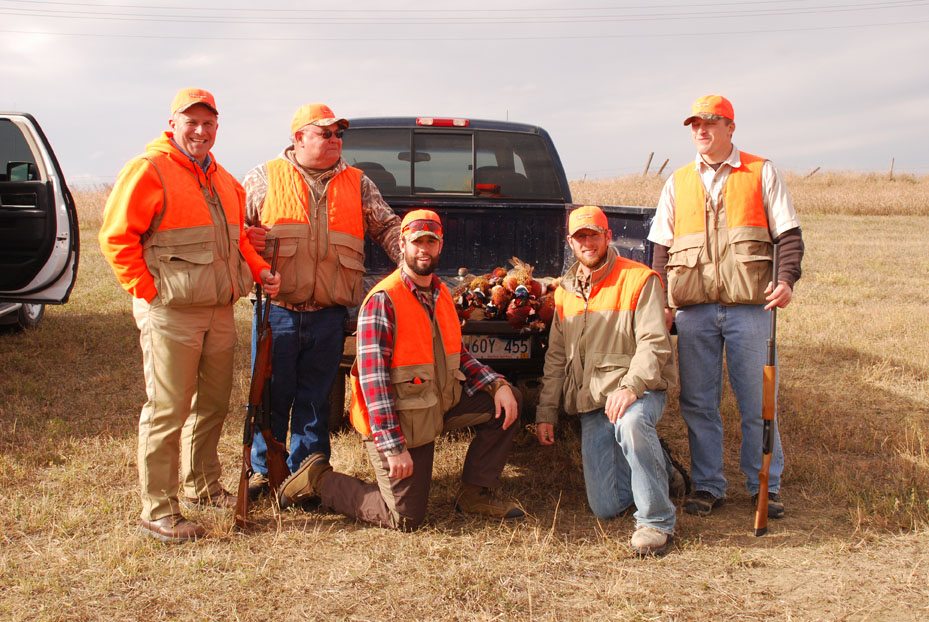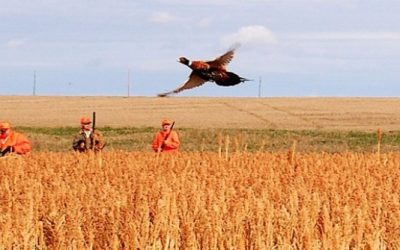For those of us that have been waiting all year for pheasant season, well, it’s here!
Reports indicate that the pheasant outlook is good with those states that have a lot of habitat really crowing about their pheasant numbers.
Over the years, I’ve hunted with hundreds of hunter and was surprised how some of them hunted and amazed by others at how well they would look over the situation, hash things over, approaching each field differently.
Here are a few tips that I’ve learned that have helped me to become a more consistent early season pheasant hunter.
- Once you arrive at the field that you plan on hunting, keep the noise down to a minimum as all wild game has a very acute sense of hearing. This means, don’t slam your car door; keep the noise to a minimum.
- If you use a whistle to control your dog, don’t keep blowing the whistle, as this will surely put the birds on alert, the last of a loud whistle is a foreign sound. If you use a whistle, try using a hawk call as this is a familiar sound and many times when the birds hear it will cause them hunker down, allowing you to get closer before the bust from the cover.
- Let your dog do the hunting and follow him wherever he leads you, as his sense of smell is the key to locating the birds.
- In the early season, you’ll run into many young birds, which hold tight, allowing you to get close, so a heavy load generally isn’t needed, as it would be during the late season. Six shot is a good load to use at this time of the year and as the season progresses you can go with heavier loads.
- Even though it’s early season, take your time hunting, as there’s no need to rush.
- Work your way from side to side when hunting a field or slough as pheasants will run off to the side of a hunter and sit tight until the hunter passes. By working back and forth, you and the other hunters with you will eventually force those running birds into the air.
- Stop occasionally so your dog can work the area, if you aren’t hunting with a dog, it’s still a good idea to stop as this makes those birds that have hunkered down nervous, thinking that they’ve been spotted forcing them into the air.
- Use wingmen and blockers, as even early season birds will run ahead of the hunters. Wingmen should be 15 to 20 yards ahead of the walkers and blockers will need to spread out at the end of the field that you’re hunting.
- Make every effort to find downed birds. Other hunters in the group should spot for the hunter and dog that are searching for the bird guiding them into the general area the bird went down as this narrows the area, making it easier to locate downed birds.
- Think safety first! Be sure you know where the other hunters are.
- Everyone in your hunting party needs to wear hunters orange as it makes it much easier for others to see you and it’s the law.
- Use the Blue Sky method and don’t shoot at anything that’s not high enough for you to see Blue Sky below the bird.
- Never shoot at a bird on the ground, as many times a hunting dog will be right behind the bird.
- Call the bird so other hunters will know if it’s a hen or rooster.
Much of the success in early season hunting depend on how much of the crops are left in the field. If there’s a lot of corn in the fields, you can bet that that’s the first place the birds will go once the first shot goes off.
It used to be an easy task to walk the corn as the rows were wide, weedy and the corn was short. Now days, rows are super narrow, clean and over 6 foot tall. If you hunt corn during the early season and you want to get a shot, you best be either a wingman or blocker.
Those hunters pushing through the corn are just going to be drivers, driving the birds in front of them to the wingmen and blockers.
I hope that we’ll all have a successful and safe pheasant-hunting season, see you in the filed!





0 Comments